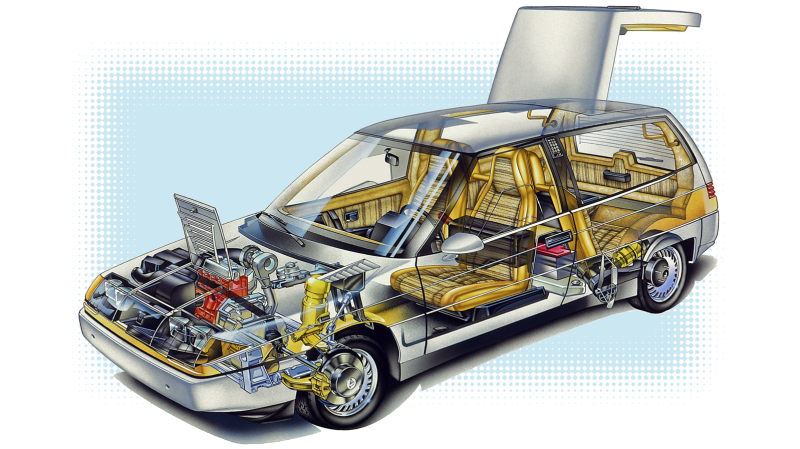
As much as our readership likes to dislike Priuses, you have to admit that there is always going to be a need for a really efficient, environmentally-friendly car. The path the Prius took to these goals isn’t the only one, though. Volvo solved the same problems in a different and arguable much more fun way back in 1983, with their LCP2000.
LCP2000 is not exactly a catchy name, but it does mean something, at least: Light Component Prototype, and the “2000″ part is just because in the 80s, everything that you wanted to feel futuristic and full of lasers and shit had “2000″ in the name.
It’s called a Light Component Prototype because the goal was to make the car from components that were, well, light. Plastics, magnesium, and aluminum were used, selected for their light weight and recyclability, and carbon fiber was even used for the door frames, which was a huge deal back in 1983. The entire floorpan of the car was a single plastic piece, to which the rest of the body was attached.
Advertisement
The result of all these novel materials is that the car weighs under 1600 lbs! That’s less than a Volkswagen Beetle of the era, and is way less than a modern Miata.
The drivetrains were interesting, too; two options were developed, both three-cylinder turbodiesels: one 1.3-liter magnesium engine that made 50 horsepower, and a cast-iron 1.4-liter engine making 90 hp, but with some novel features, as Volvo’s media site tells us:
… heat-insulated without a cooling jacket in the cylinder head and using the engine oil as coolant instead. It ran on any oil fuel, like rapeseed oil, which gave the car a nice smell of fish & chips when it drove past. All LCPs had front-wheel drive, and either a five-speed manual transmission or an electronically controlled CVT.
It used the engine oil for cooling? Air-cooled engines pull this trick as well; what appears to be a radiator in that fantastic cutaway drawing up top could actually be a big oil cooler.
The combination of the light weight, CVT transmission (which Volvo got from their purchase of DAF), and efficient turbodiesel engines meant that the LCP2000 got 56 MPG city/81 highway, which is as good as a Prius in the city, and way the hell better on the highway.
Advertisement
The design of the car itself is pretty damn clever, too: it’s a sort of shooting-brake two-door wagon, but with a rear-facing bench seat at the rear. The front and rear seats share a common backrest, and there’s a stout frame member between them, and room for the battery, which distributes a good chunk of weight in the center of the car, which must have helped handling.
It reminds me a lot of a late ‘80s/early ‘90s Honda Civic hatch, which is a good thing.
The rear seat passengers entered the car through a rear hatch that also opened up a big chunk of the rear roof, making entry and exit quite easy. The car has a wedgy, ‘80s crisp-line design, with lots of window area, clean detailing, an all glassed-over front end, and that stripey beige-rainbow interior is just awesome.
Advertisement
Volvo even conducted studies of the total energy consumption of the LCP, across its whole life cycle of minerals in the ground, though its production, useful life, and eventual and inevitable retirement to the scrapyard.
The LCP2000 had essentially the same goals as the electric-gas hybrid Prius that came later, and arguably accomplished those goals better, thanks to not requiring an expensive, heavy, and difficult-to-produce battery pack.
It also seems a hell of a lot cooler, and not just because I’m a sucker for rear-facing seats.
Advertisement
Of course, it didn’t happen like that, and there’s Priuses everywhere, and nobody has a nifty, lightweight little Volvo wagon with interesting seats.
Dammit.
That back-to-back seating thing has eventually got to work on something other than a Zündapp Janus
















